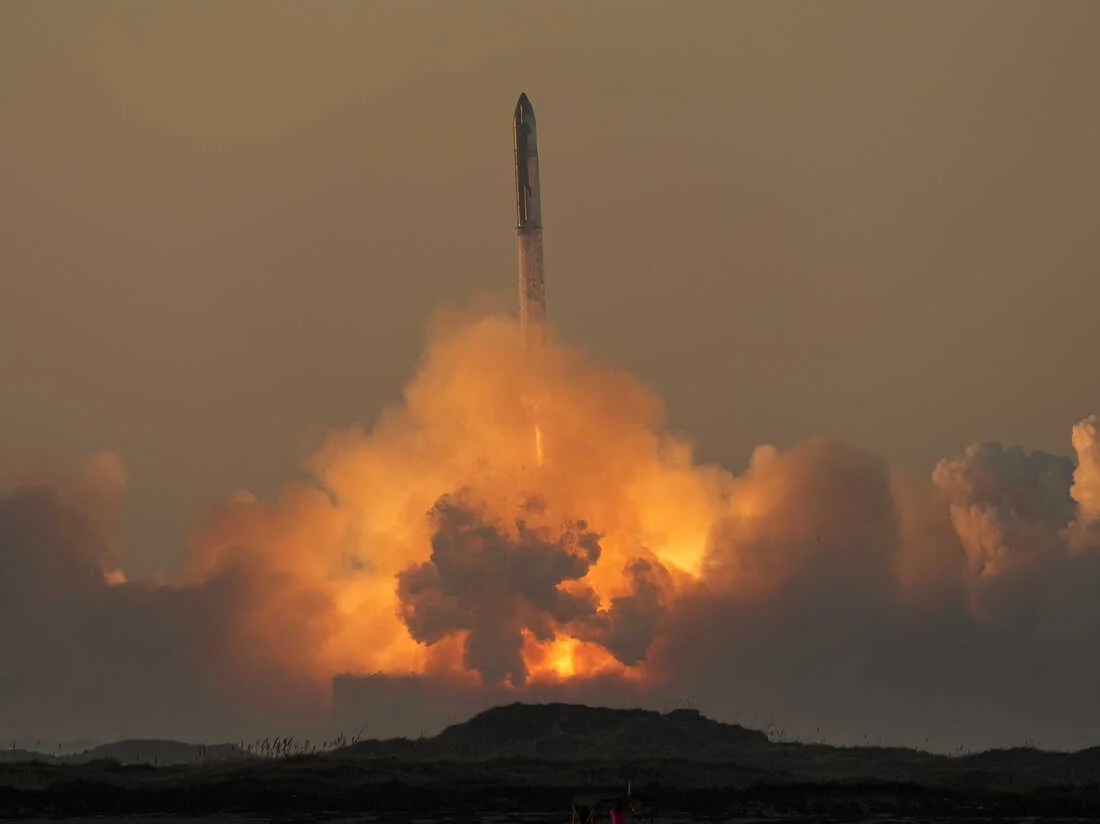In a dramatic turn of events, Elon Musk’s SpaceX Starship encountered a setback during its recent test mission, culminating in an explosion just minutes after liftoff. Despite achieving some notable milestones, the mission faced communication loss and the subsequent self-destruct activation on the Starship spacecraft.
The test mission took a turn for the worse as the Super Heavy booster exploded over the ocean, leading to a loss of communication with the Starship spacecraft. SpaceX swiftly initiated the self-destruct feature on Starship, marking the test as a failure.
While the mission fell short of its overall objectives, SpaceX did achieve noteworthy milestones. The rocket traveled significantly farther into its flight profile compared to a previous attempt in April. During the initial launch, Starship experienced issues, tumbling after four minutes, and failing to separate from the Super Heavy rocket.
Elon Musk’s Emphasis on “Hot Staging”:
Elon Musk, SpaceX CEO, highlighted the significance of the “hot staging” phase, considered the riskiest part of the flight. This phase involves keeping the higher-stage engines running as long as they are connected to the rocket. Musk confirmed the successful completion of this critical stage.
Challenges Post-Separation:
However, challenges emerged post-separation, with the Super Heavy rocket losing control shortly after. The rocket exploded over the Gulf of Mexico, deviating from SpaceX’s goal of restarting the Super Heavy’s engines for a safe landing.
Future Ambitions and Second Test Flight:
SpaceX, known for its ambitious goals, still plans to launch Starship on its second test flight. Elon Musk envisions colonizing Mars with Starship, the largest rocket ever built. NASA is also eyeing Starship for future lunar missions.
Design Features and Reusability:
A key design feature of SpaceX’s Starship is its complete reusability, intended to significantly reduce costs. The rocket, with a height of 397 feet and a thrust of 16.7 million pounds from the Super Heavy booster, surpasses NASA’s Space Launch System.
Ongoing Modifications and Challenges:
SpaceX continues to modify its approach, introducing “hot staging” and making improvements to the launchpad infrastructure to withstand extreme heat and force. The setbacks underscore the challenges inherent in advancing space exploration technology.
The test faced regulatory scrutiny, with the Federal Aviation Administration approving another attempt after months of evaluation. However, environmental organizations filed a lawsuit, alleging disregard for environmental laws.
While SpaceX grapples with setbacks and challenges, the commitment to advancing space technology remains evident. The ongoing modifications and tests serve as a testament to SpaceX’s determination to push the boundaries of space exploration. The outcome of the upcoming second test flight will undoubtedly be closely watched by the space community and beyond.




